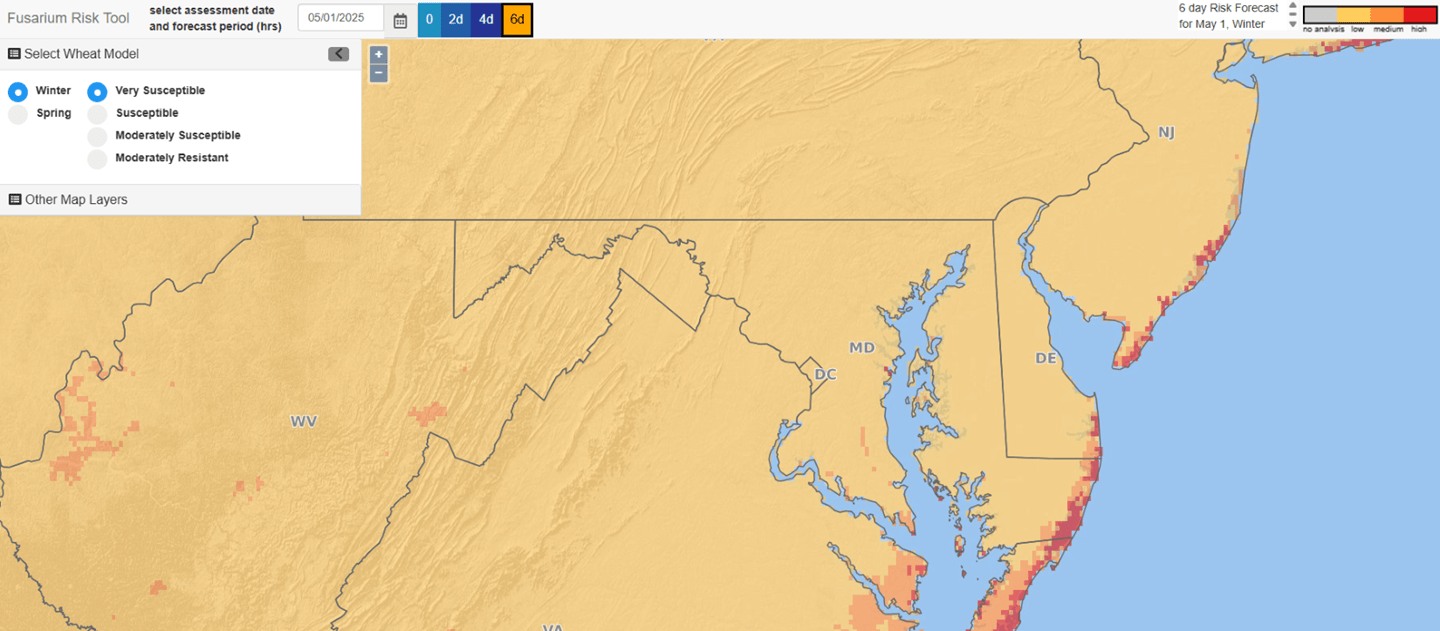
Fusarium Head Blight Update

According to the Fusarium Risk Assessment Tool (wheatscab.psu.edu), the current risk for Fusarium Head Blight (FHB) development is low, although that could change quickly if next week’s rain showers materialize. Depending on where you are located in the state, wheat is anywhere from nearing flag leaf emergence to head emergence and early flower. Continue to use the Risk Assessment Tool to monitor FHB risk as wheat begins to flower, which should be around 3-5 days after head emergence or up to 10 days in cooler weather. This tool can help you decide whether or not to pull the trigger on a fungicide application to some or all of your wheat acres. Reference last month’s issue for details regarding fungicide application. In short, fungicides should be applied at Feekes growth stage 10.5.1 (beginning of flowering, Figure 2) up to 5-7 days after. Ground applications should be made with bi-directional nozzles pointed forward and rear with 10-15 gallons/A water as a carrier; the use of a non-ionic surfactant can improve coverage. Aerial applications should be made with at least 4-5 gallons/A of water. You can begin scouting for symptoms of FHB infection around 21 days after flowering.
This article appears in May 2025, Volume 16, Issue 2 of the Agronomy News.
Agronomy News is a statewide newsletter for farmers, consultants, researchers, and educators interested in grain and row crop forage production systems. This newsletter is published once a month during the growing season and will include topics pertinent to agronomic crop production. Subscribers will receive an email with the latest edition.
Subscribe